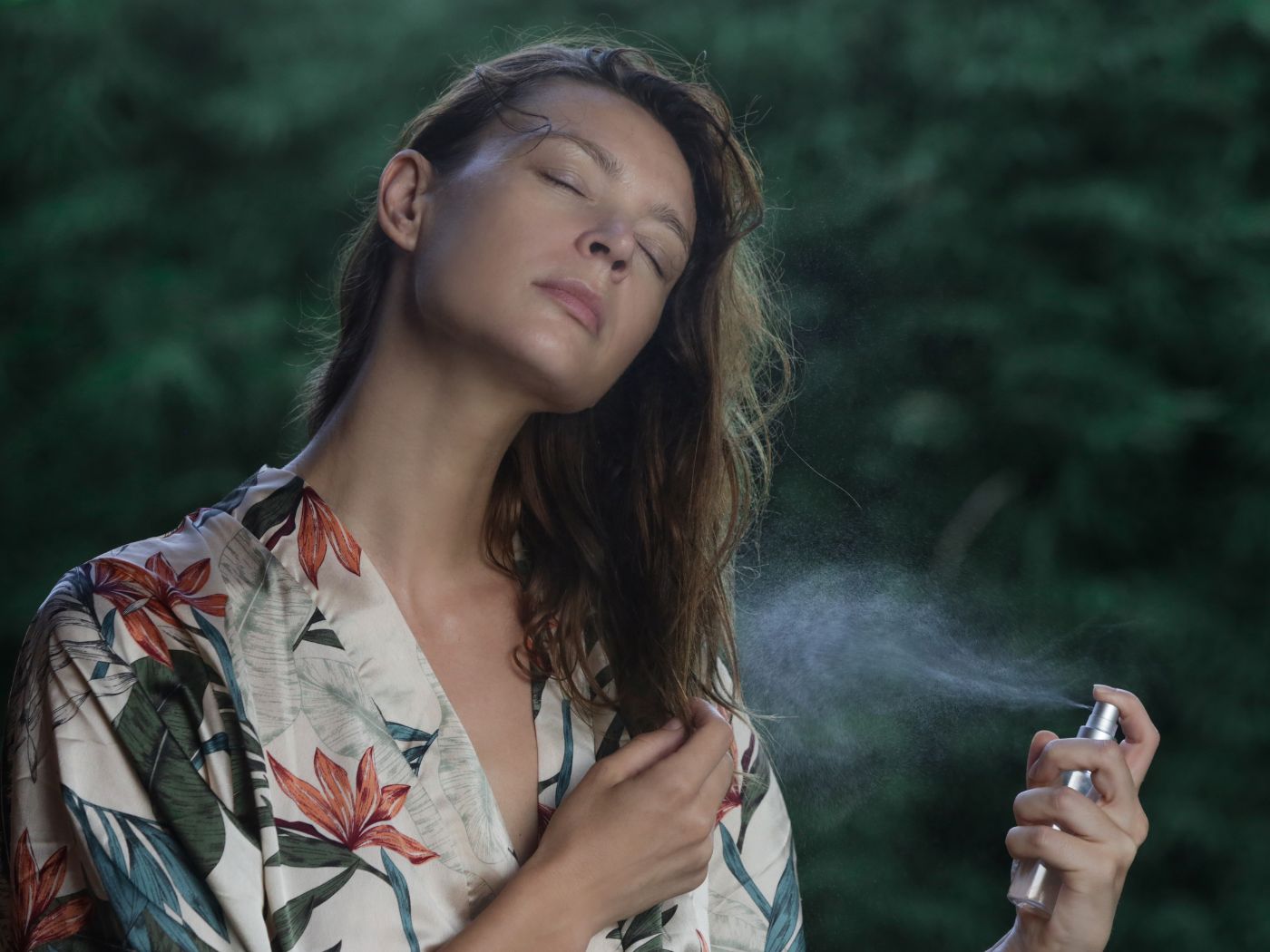- Understanding Gel Based Sunscreen
- Understanding Cream Based Sunscreen
- Key Differences In Sunscreen Types
- Factors To Be Considered When Buying Cream Or Gel Based Sunscreen
- FAQs On Gel Vs Cream Sunscreen
Sunscreen is an important part of our daily skincare routine as it protects us from UV damage that can cause several skin problems. But there are different types of sunscreen which begs the question which is the right one for you? This answer depends on several factors that we will explore today. Today we will talk about gel vs cream sunscreen, Understanding the Differences: Gel-Based Sunscreen vs. Cream-Based Sunscreen to help you make the right choice! So let’s begin, shall we?
Understanding Gel Based Sunscreen
Gel-based sunscreens are a type of sunscreen formulation that comes in the form of a gel. They are designed to provide sun protection while offering a lightweight and non-greasy feel on the skin. Here are some key points to understand about gel-based sunscreens:
-
Sunscreen Protection:
Gel-based sunscreens, like other sunscreen types, are formulated to protect the skin from the harmful effects of the sun's ultraviolet (UV) radiation. They work by either absorbing or reflecting the UV rays, preventing them from penetrating the skin and causing damage. -
Cooling and Refreshing Sensation:
Many gel-based sunscreens have a cooling and refreshing effect on the skin. The water-based formula and lightweight texture create a soothing sensation when applied, making them particularly suitable for hot and humid climates.
-
Suitable for Oily or Acne-Prone Skin:
Gel-based sunscreens are often recommended for individuals with oily or acne-prone skin. The non-greasy formula is less likely to clog pores or contribute to breakouts, making it a preferred option for those with blemish-prone skin. -
Sun Protection Factor (SPF):
Like other sunscreen types, gel-based sunscreens come in varying Sun Protection Factor (SPF) levels, indicating the degree of protection against UVB radiation. It is recommended to choose a gel-based sunscreen with a minimum SPF of 30 for adequate protection.
-
Reapplication:
It's important to note that regardless of the sunscreen type, regular reapplication is necessary for effective sun protection. Gel-based sunscreens may require more frequent reapplication, especially if you sweat or come into contact with water.
Now let’s take a look at cream-based sunscreen for more clarity!
Understanding Cream Based Sunscreen
Cream-based sunscreens are a type of sunscreen formulation that comes in the form of a cream. They are designed to provide sun protection while offering a moisturising and nourishing effect on the skin. Here are some key points to understand about cream-based sunscreens:
-
Sunscreen Protection:
Cream-based sunscreens, like other sunscreen types, are formulated to protect the skin from the harmful effects of the sun's ultraviolet (UV) radiation. They work by either absorbing or reflecting the UV rays, preventing them from penetrating the skin and causing damage.
-
Moisturising Benefits:
One of the advantages of cream-based sunscreens is their moisturising properties. The creamy texture helps to lock in moisture, making them suitable for individuals with dehydrated skin. The added hydration can improve the skin's overall appearance and help prevent dryness or flakiness.
-
Suitable for Normal to Dry Skin:
Cream-based sunscreens are often recommended for individuals with normal to dry skin types. The richer texture provides an extra layer of hydration and can help soothe dry or sensitive skin.
-
Sun Protection Factor (SPF):
Like other sunscreen types, cream-based sunscreens come in varying Sun Protection Factor (SPF) levels, indicating the degree of protection against UVB radiation. It is recommended to choose a cream-based sunscreen with a minimum SPF of 30 for adequate protection.
-
Reapplication:
Regular reapplication of cream-based sunscreens is essential for maintaining effective sun protection. The moisturising properties of these sunscreens may also contribute to their longevity on the skin. However, it's still necessary to reapply every two hours or more frequently if you sweat, swim, or come into contact with water.
Now that you know about both types of sunscreens, let’s look at some gel vs cream sunscreen differences.
Key Differences in Sunscreen Types
To understand the real difference in sunscreen types, we need to take a look at the difference in application & absorption and texture & consistency. Here is a quick guide to help you in choosing the best sunscreen by exploring the contrast between gel-based and cream-based variants! 
Difference In Application & Absorption
Gel-based sunscreens are generally easy to apply and spread evenly across the skin. The lightweight consistency allows for quick absorption and leaves a smooth finish. They can be particularly useful for areas with hair or when applied on hairy skin.
Cream-based sunscreens may require slightly more effort during application compared to other formulations. Due to their thicker texture, they may take longer to blend into the skin. It's important to ensure even coverage by applying a sufficient amount and gently massage it in until fully absorbed.
Difference In Texture & Consistency
Gel-based sunscreens have a unique consistency and texture. They are typically lighter and less viscous compared to cream or lotion-based sunscreens. The gel formula allows for quick absorption into the skin without leaving a heavy or greasy residue.
Whereas, cream-based sunscreens have a thicker and more emollient consistency compared to gel or lotion-based sunscreens. The cream formula provides a moisturising and nourishing feel on the skin, helping to hydrate and replenish the skin barrier.
Factors To Be Considered When Buying Cream Or Gel Based Sunscreen
When buying a cream or gel-based sunscreen, there are several factors to consider to ensure you choose the most suitable product for your needs. Here are some key factors to keep in mind:
-
Sun Protection Factor (SPF):
Check the Sun Protection Factor (SPF) indicated on the sunscreen packaging. SPF measures the level of protection against UVB rays, which are responsible for sunburns. Choose a sunscreen with a minimum SPF of 30 to ensure adequate protection. Keep in mind that higher SPF does not necessarily mean significantly better protection, as the difference in UVB filtering becomes marginal above SPF 50.
-
Broad-Spectrum Protection:
Look for a sunscreen that offers broad-spectrum protection, meaning it shields the skin from both UVB and UVA rays. UVB rays primarily cause sunburns, while UVA rays contribute to skin ageing and can penetrate deeper into the skin. Both types of UV rays can lead to skin cancer. A broad-spectrum sunscreen helps protect against both types of radiation.
-
Skin Type and Sensitivities:
Consider your skin type and any specific sensitivities you may have. Cream-based sunscreens are often more moisturising and suitable for dry or normal skin types, while gel-based sunscreens are lighter and may be preferred for oily or acne-prone skin. If you have sensitive skin, opt for a sunscreen that is labelled as "gentle," "hypoallergenic," or "sensitive skin" to minimise the risk of irritation.
-
Consistency and Application:
Determine whether you prefer a cream or gel-based sunscreen based on personal preference and desired texture. Cream-based sunscreens tend to be thicker and more emollient, providing added hydration, while gel-based sunscreens have a lighter, non-greasy feel.
-
Water Resistance:
If you plan to engage in water activities or sweat excessively, consider a water-resistant sunscreen. Water-resistant sunscreens adhere better to the skin even when exposed to water, but they still require reapplication after a certain period (typically 40 or 80 minutes) of water exposure.
-
Ingredients:
Check the ingredients list for any specific ingredients you may want to avoid or include. Look for sunscreens that contain ingredients like zinc oxide or titanium dioxide, as they provide effective broad-spectrum protection. Also, as a general rule, you should avoid chemical-based products.
Pure Sense, a 100% natural skincare and haircare brand has recently released a new series of sunscreens that are designed with only natural ingredients.
-
Sun Care Matte Gel:
It is a gel-based sunscreen made using Niacinamide and Aloe Vera to give you dual protection against UVA and UVB, along with SPF 50 PA+++ Protection for a moisturised skin.
-
Sun Care Glow Cream:
It is a cream-based sunscreen made using Niacinamide and Saffron Extract to nourish and protect your skin against UVA and UVB damage with the help of SPF 50 PA+++ protection.
Conclusion
We hope that now based on your skin type and sunscreen selection has become simpler. Remember to only use natural products to avoid any skin problems.
FAQs On Gel Vs Cream Sunscreen
-
Are cream-based sunscreens more likely to leave a white cast on the skin?
Cream-based sunscreens, especially those containing physical blockers like zinc oxide or titanium dioxide, may have a higher tendency to leave a white cast on the skin. This is because these ingredients can reflect light and appear more noticeable on certain skin tones. It's advisable to choose a sunscreen specifically labelled as "non-whitening" or "invisible" if you're concerned about a white cast.
-
Do gel-based sunscreens provide the same level of sun protection as cream-based sunscreens?
Both gel-based and cream-based sunscreens can provide the same level of sun protection if they have the same SPF (Sun Protection Factor) and offer broad-spectrum protection. The key factor is the SPF level, which indicates the effectiveness of the sunscreen against UVB rays. As long as you choose a gel-based or cream-based sunscreen with an appropriate SPF, you can achieve the same level of sun protection regardless of the formulation.
-
Gel-Based Sunscreen vs. Cream-Based Sunscreen: Which is more suitable for your skin type?
Determining the suitability of gel-based or cream-based sunscreen for your skin type depends on several factors, such as texture, consistency, use, etc. Ultimately, it's important to choose a sunscreen formulation that feels comfortable on your skin and aligns with your specific needs and preferences. If you have concerns or specific skin conditions, consulting with a dermatologist can help you determine which type of sunscreen is best suited for your skin.







